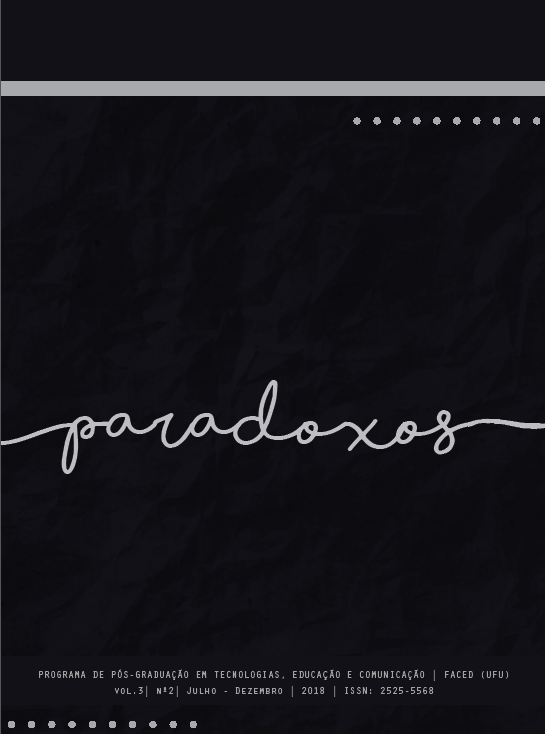Lola at Palas Palace: Tom Tykwer's cinematic composability
DOI:
https://doi.org/10.14393/par-v3n2-2018-49703Keywords:
Composability, Possible worlds, Lola Rennt, LeibnizAbstract
We propose that the film "Lola Run" can be used as a didactic instrument of presentation of the philosophy of Leibniz in "Tests of Theodicy". For this, we present an analysis of the film accompanied by an explanation of the main concepts of the philosopher. Then we create a calculation to measure the actions of the characters and through this we justify Leibniz's thesis, concluding that even in the best possible world there is the occurrence of evils.
Downloads
References
BOÉCIO. A consolação da filosofia. Trad. Wilian Lí. São Paulo: Martins Fontes, 1998.
LEIBNIZ, G. W. Ensaios de Teodiceia: Sobre a bondade de Deus, a liberdade do homem e a origem do mal. Trad. William Piauí e Juliana Silva. São Paulo: Estação Liberdade, 2017.
______. Essais de Théodicée: Sur la bonté de Dieu, la liberté de l’homme et l’origine du mal. Paris: Aubier Montaigne, 1956.
LOLA RENNT. Dirigido por Tom Tykwer. 2008; Berlin, Alemanha. X-Filme Creative Pool WDR.
RUSSELL, Bertrand. A Filosofia de Leibniz. Trad. João Villalobos, Hélio de Barros e João. P. Monteiro. São Paulo: Editora Nacional, 1968.
Downloads
Published
How to Cite
Issue
Section
License
Autores que publicam nesta revista concordam com os seguintes termos:
Autores mantém os direitos autorais e concedem à revista o direito de primeira publicação, com o trabalho simultaneamente licenciado sob a Creative Commons Attribution License que permitindo o compartilhamento do trabalho com reconhecimento da autoria do trabalho e publicação inicial nesta revista.
Autores têm autorização para assumir contratos adicionais separadamente, para distribuição não-exclusiva da versão do trabalho publicada nesta revista (ex.: publicar em repositório institucional ou como capítulo de livro), com reconhecimento de autoria e publicação inicial nesta revista.



